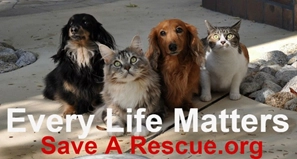… More Pictures and Information, but meanwhile this is what we’ve discovered for you about this breed:
ORIGIN
Persia/Iran
The Persian cats’ lineage originated in Persia/Iran and Turkey. The felines from Persia/Iran were gray coated whereas those from Turkey were white.
PERSONALITY
- Calm and quiet
- Loving and affectionate
- Perfect mix of friendly and independent
- Medium sized and stocky
- Requires daily grooming
- Non-hypoallergenic
- Happy being the only pet
- Needs time around children before feeling comfortable
It’s easy to fall in love with an elegant Persian. Gentle in nature, they long for a soft lap and affectionate pampering. Persians are known for dedication to their family.
Along with their physical beauty, the Persian cat is known for its inner beauty. You will often find that owners praise the cat for its easy-going nature. The British are especially known for their love of the Persian cat. They are social and laid back, perfect for lounging around their home with their owners. With all of their gorgeous qualities, it makes sense that they are one of the most admired cats in the world. Persian cats have set the standard for long haired cats everywhere.
HISTORY
Their regal appearance attracted the attention of an Italian noblemen and world traveler, Pietro Della Valle. He is credited with bringing the Persian to Europe in 1626. At that time, the breed looked notably different than today with long faces, larger ears and slender build. Through selective breeding over the years, Persian cats exhibited the visual characteristics we know today: round head, snub nose, chubby cheeks and sturdy build. Persians are certainly one of the most popular breeds in the United States.
You might sometimes hear it referred to as the longhair cat, due to its appearance and popularity. Today the Persian cat is known for being the mascot figure of a popular brand of cat food, kittens have been featured on toilet paper TV commercials and is one of the most commonly sought after pet cats in the world.
DID YOU KNOW?
The Persian cat is one of the oldest breeds and has been depicted in hieroglyphics as early as 1684 BC.
Some people also believe that these cats originated from Turkey, as well as England. The Persian Cat held a very special spot within the hearts of England’s royal families as well as to the king of Persia. Persian Cats were considered to be a valued possession.
Did you know cat hair isn’t the cause of reactions by people sensitized to cat allergens? The primary cause is an allergen produced in cats’ saliva. These allergens are spread to cats’ hair through grooming, which are then shed into the environment.
APPEARANCE – COAT
Persian cats are known for their beautiful coats. The coats are very long and come in any cat color. Because of the long coat, owners must ensure that they stay on top of their Persian cat’s grooming. Otherwise, the Persian cat’s coat will become matted and tangled. Owners may also wish to bathe their Persian cat more often than the average short haired cat.
The Persian cat has a shorter, almost stubby body and a very round head. Additionally it is known for its flat face and muzzle. Most Persian cats live to be at least ten years old, but many end up living much, much longer. A healthy Persian cat may live to be twenty years old, so they are definitely a commitment.
Persian cats are recognized for their massive head in proportion to their body. They have small wide set ears, a short snub face and large round brilliantly colored eyes. Their legs are short, thick and strong with tufted toes.
Persian Cat Care
Before bringing a Persian home, the key word to remember is GROOMING! This luxuriously longhaired beauty also has a thick undercoat so daily brushing is needed. The Persian comes in a wide variety of patterns and colors.
Persian cats require the same kind of care that you would give to any other species of domesticated cat. Such as providing your cat with the best kind of food and making sure that fresh water is always available to them. Remember to not let your cat’s food spoil because if they eat this they can become quite ill.
Always keep your cat’s litter box clean and well maintained. Persian cats require a special type of litter due to their long hair.
Persian cats also have a very short face and are prone to breathing problems. So be sure to have your Persian cat checked regularly by your vet. Also take your Persian in to see the vet as soon as you notice something out of the ordinary with your cat. Only you will be able to spot when something’s not right.
Caring for a Persian Cat is a unique and rewarding experience. And as soon as you get the hang of it you and your Persian will be able to become used to the care routine.







